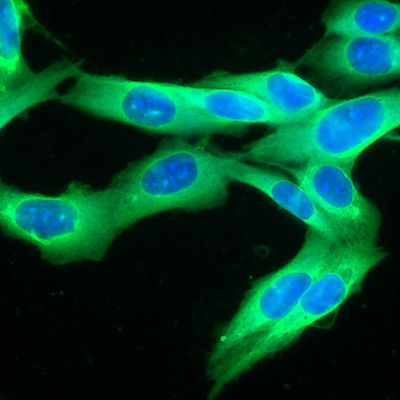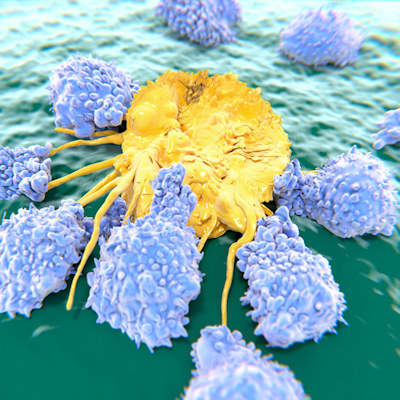January 10, 2023 -- Queen Mary University of London, King's College London, and Francis Crick Institute Research scientists have identified a protein that makes melanoma more aggressive. The study, published January 9 in the journal Nature Cell Biology, contributes to the understanding of melanoma progression, and may facilitate new ways to target melanoma, the most serious form of skin cancer.
During metastasis, cancer cells break away from the primary tumor and travel to other parts of the body, where they resume growing. While metastasis, the leading cause of cancer-related deaths, has been extensively studied, its mechanisms are poorly understood.
Each cell's genetic information is contained within a large, stiff nucleus, which restricts its ability to squeeze through tight gaps. Researchers found that aggressive melanoma cells harbor high levels of a protein called LAP1, which makes their nuclei more malleable and facilitates their spread. Increased LAP1 levels were linked to poor prognosis in melanoma patients.
The team experimentally challenged aggressive and less-aggressive melanoma cells to migrate through artificial membrane pores smaller than their nucleus. The aggressive cells were from a patient's melanoma metastasis site, and the less-aggressive cells were from the same patient's original, or primary, melanoma tumor.
Imaging showed that the aggressive cells moved through the pores more effectively than the less-aggressive ones by forming bulges, called blebs, at the nucleus edge. Genetic melanoma cell analyses revealed that the aggressive cells forming the blebs contained higher levels of the LAP1 protein within the nuclear envelope -- the membrane surrounding the nucleus. LAP1 loosens the nuclear envelope's tethering to the underlying nucleus, allowing the nuclear envelope to bulge away and form blebs, enabling cancer cells to squeeze through gaps that would normally stop them.
When researchers blocked LAP1 production in aggressive cells, they found the cells less able to form nuclear envelope blebs and squeeze through artificial pores. Patients with high LAP1 levels in the cells around the primary tumor edge had more aggressive cancer and poorer outcomes, indicating the protein's potential use in identifying higher-risk melanoma patients.
As there are currently no drugs that target LAP1 directly, the team is investigating ways to target both LAP1 and nuclear envelope blebbing in order to block this melanoma progression mechanism. They also seek to investigate whether LAP1-driven nuclear envelope blebbing occurs in other cells, including immune cells, that make up and move through tumor environments, to determine if this process in other cells helps or hinders cancer progression.
"Because LAP1 is expressed in such high levels in metastatic cells, interfering with this molecular machinery could have a big impact on cancer spread," said Queen Mary professor and study co-leader Victoria Sanz-Moreno, PhD, in a statement.
Copyright © 2023 scienceboard.net












